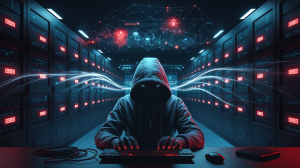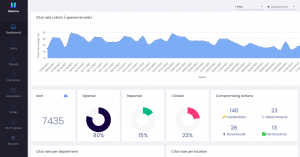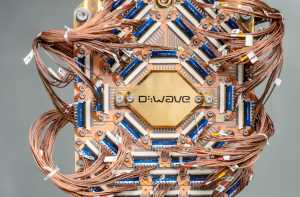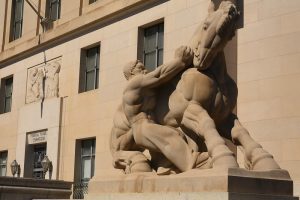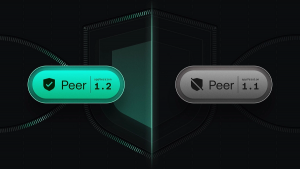Super PACs and Social Media: Another Ploy for 2012
![]() Traditionally, political communication is understood as the space in which the applicant sends a mass message to the public with the intent to persuade their decision to vote. Under this logic, voters had only opinion polls and surveys as the most direct routes to provide feedback to candidates.
Traditionally, political communication is understood as the space in which the applicant sends a mass message to the public with the intent to persuade their decision to vote. Under this logic, voters had only opinion polls and surveys as the most direct routes to provide feedback to candidates.
With the impact of social networks on the evolution in political communication (i.e., the tendency to conceive online users that facilitate interaction and collaboration between candidates and supporters), the layout of information exchange between senders and receivers have been modified. Bottom line, social networking sites help people communicate better, creating structured online human networks and extending that to the upcoming presidential election.
The Social Trend
Social networks are a way for politicians to be credible and to enhance their image. Traditional media outlets are losing their effectiveness in the presidential campaigns, unable to react as quickly as social networks during debates and other political developments.
Through social media, politicians have the ability to address millions from a central platform, creating a genuine community and a strong sense of belonging.
President Obama realized this to a greater extent than anyone else. During the 2008 election, Obama incited a younger generation of voters and actively discussed and posted his political views on social media sites. Last year when the 2012 presidential election began to kick off, Obama had five times as Twitter followers and eight times as many Facebook fans as the combined Republicans. He was also quite active on YouTube to answering questions submitted on the video-sharing network.
![]() Obama currently has more 13 million followers on Twitter and 25.5 million likes on Facebook, while his opponent Mitt Romney has about 376,000 followers and 1.5 million likes, followed by Newt Gingrich has more than 1.4 million followers and 295,979 likes.
Obama currently has more 13 million followers on Twitter and 25.5 million likes on Facebook, while his opponent Mitt Romney has about 376,000 followers and 1.5 million likes, followed by Newt Gingrich has more than 1.4 million followers and 295,979 likes.
Google has dedicated one website for documenting the digital campaign trail on social media’s impact on the 2012 election.
“More than 600 politicians have a YouTube channel. There are so many ways to get your message out that you want to curate as a politician, but then on the other side, your detractors, but even more importantly, the average citizen can be heard. It’s really changed the game in so many ways,” said Jonathan Perelman, global lead in industry relations for Google.
Facebook is the place where presidential candidates have their personalized Facebook pages, which is attracting more surfers. The pages are also integrated with additional applications, facilitating more interaction with fans.
Super PAC Phenomenon Plays Decisive Role in Election
Ten of millions of people are receiving a personal email from Rufus Gifford, the national financial director of President Barack Obama’s re-election campaign, addressing people by their first names and asking them to donate to the presidential campaign.
![]() The campaign’s Super PACs came of the ‘legal birth’ of the Supreme Court of the United States in 2010, in the judgment called Citizens United, which ruled that corporations have the same right to freedom of expression compared to individuals.
The campaign’s Super PACs came of the ‘legal birth’ of the Supreme Court of the United States in 2010, in the judgment called Citizens United, which ruled that corporations have the same right to freedom of expression compared to individuals.
In 2010, eighty Super PAC organizations were registered with the Federal Election Commission. For the 2012 elections, the number reached to 250. Each presidential candidate has his own Super PAC run by politicians of his confidence, and in many cases have been his political advisers in the past or have worked with them in government positions.
Advertising at the Highest Level
Even before the real election battle, the Super PACs have raised about $32 million in 2010, while spending about $90 million. It is estimated that both the Obama and the Republican candidate Romney may get to raise $1000 million by the end of the 2012 presidential election.
According to an infographic from visual.ly, the Obama campaign has so far collected more than $139 million, the national party committees and the Congress $208 million, and the Super PAC $32 million. The report also reveals about 69 percent of people, or nearly 7 in 10 Americans, believe that super PACs should be made illegal.
Restore Our Future is the Super PAC behind Mitt Romney. In Iowa, the group spent $16 million in advertising. Almost half of the ads were funded by this group that supports Mitt Romney against Newt Gingrich. It is estimated that Restore Our Future has raised about $30 million as of February 2012.
Winning our Future, Gingrich’s Super PAC, has received $5 million from Sheldon Adelson, a casino owner in Las Vegas and a personal friend of Gingrich.
The U.S. Presidential election is just a few months away and these candidates are heading to social networking sites, flagging their campaign with digital attentiveness. It will be as or more impactful than the 2008 campaign, where social media was new to the presidential election. Everyone is fully armed and ready for social media integration, making for a fiercer competition amongst candidates this time around.
A message from John Furrier, co-founder of SiliconANGLE:
Your vote of support is important to us and it helps us keep the content FREE.
One click below supports our mission to provide free, deep, and relevant content.
Join our community on YouTube
Join the community that includes more than 15,000 #CubeAlumni experts, including Amazon.com CEO Andy Jassy, Dell Technologies founder and CEO Michael Dell, Intel CEO Pat Gelsinger, and many more luminaries and experts.
THANK YOU






